I actually wondered what went on in the lyrics of System Of A Down – Sugar, and I found this:
But that’s not the only one!
This makes the second commonly misheard song with the word “sugar“. The other is Fall Out Boy – Sugar, We’re Going Down. 🙂
I actually wondered what went on in the lyrics of System Of A Down – Sugar, and I found this:
But that’s not the only one!
This makes the second commonly misheard song with the word “sugar“. The other is Fall Out Boy – Sugar, We’re Going Down. 🙂
I got my Sony A700 focus screen changed to the Type M Focusing Screen at a Sony Service Center. They charged RM70 for it. (Yes that’s the same price as the Nikon and Canon counterparts.)
The screen has to be changed there itself because they need to update the camera firmware as the focusing screen darkens considerably with darker lenses, compared to the standard focusing screen. The metering unit is above the viewfinder and if you ordered it online and did it yourself, your camera would overexpose, depending on aperture.

I got my original focusing screen as well, with the box which it came in.
The Type M is a plain screen and looks no different from the standard A700 screen. It does not have a split-prism rangefinder in the middle like manual focus SLRs. I’d have loved that, though!
Its texture is finer, and you can see smaller ‘diamonds’ compared to the standard focusing screen when you point at distant lights and go out of focus.
Manual focusing with the Minolta 50mm F1.4 is a joy – you can literally see the creaminess of the F1.4 as you go in and out of focus. It allows much greater precision. If you press down the DOF Preview button while changing the aperture, you can see that it starts to darken and the DOF increases at F2.0 onwards. On a standard screen it darkens and the DOF increases about F3.2 * onwards. I’m not sure of the exact aperture as different people get different results at different times.
Thus, the Type M screen would in theory feel 1.33 stops darker when a F5.6 lens is fitted.
Does a Type M screen feel brighter with a F1.4 lens? Unfortunately, no… but the only way to test it is to stick a digital camera on the viewfinder and measure how much light gets transmitted to the viewfinder.
You can see the 50mm F1.4’s superb, punchy color better. For once it feels that what you see is what you get. Sometimes, you can misfocus in manual focus when you think the viewfinder is sharp but it isn’t, and is only kinda close.
When I first put on my F4 beercan, I was like “whoa, that’s dark, did I put a polarizer on it or something?”
I compared it with KJ‘s standard A700 with a Minolta 50mm F1.4, and XJ and I found that my screen seemed less contrasty and sharp. This is probably because mine is showing a F2.0-like view (the Minolta is less contrasty and slightly gauzy wide open) while his shows the lens at F3.2, pretty contrasty already.
Would I recommend it? If you shoot a lot at F2.8 or brighter, this is for you (I suppose you’ll leave a F5.6 lens to AF). If your lenses are mostly darker than F2.8 then I do not recommend it.
Pros:
– Greater focusing accuracy, you’ll be sure that whatever you focused on is spot on
– Shows focus to F2.0 or so
– Really shows the creaminess and color of your bright lenses
Cons:
– Lenses darker than F2.8 get noticeably darker
– Macro with dark apertures gets even darker than a normal screen when you press the DOF Preview button
– Does not affect your image quality, it only helps with focusing
Note that the Sony A700 is the only Sony Alpha body that offers serviceable focusing screens; for the A100, A200, A300 and A350 a third-party option is required. There is also a Type L SI which comes with grid lines for architecture, which replaces a different screen (and so, the Type M and Type L SI can coexist. Thanks Pete Ganzel for the info!)
* David Kilpatrick claims that a normal viewfinder is only accurate to around F4.5. Your results may vary.

Yes that’s right, I am selling this solid beauty of glass and metal. It’s a constant F3.5 even at 220mm. Originally got it for my Olympus OM-2000 but rarely used it as I shoot mostly digital now.

Clean glass. No dents or scratches. Very nice black finish. OM Zuiko mount.
Note that it needs the Zuiko to Four-Thirds adapter to be used on Olympus E-System bodies or Panasonic L-series bodies.
Works great with the Olympus E-3 and Olympus E-510 because you can enter the focal length of the lens with their latest firmware. You’ll get a 440mm F3.5! The only current Four-Thirds lens that gets to 220mm while being at least this bright is the Olympus Zuiko Digital ED 90-250mm F2.8.

Fully extended length with retractable hood and turned to minimum focusing distance.

It has a built-in tripod mount.
Includes 77mm front cap and rear cap.

Close up of the lens. It is a push-pull but it does not increase focal length when extended – instead, it goes backwards! Note the yellow macro ring, which gives a boost in lens extension.

Mounted on my Olympus OM-2000.
Sample Shots

70mm with Fujifilm Superia ASA 1600.

220mm with Fujifilm Superia ASA 1600.

Can’t remember the focal length but this was at 1/30s with Fujifilm Superia ASA 100.

220mm with full macro extension with Fujifilm Superia ASA 1600. It was evening so the shutter speed was 1/60s which makes it a tad unsharp.
Selling price is RM450, negotiable. Lens can be inspected before buying. Would prefer COD (Cash On Delivery) in Klang Valley. Please email albnok@hotmail.com if you are interested.
Runway models are flat.

My latest lens acquisition – the Zenit Industar 61 L/Z 50mm F2.8 Macro for M42 screw mount! It is one of the most highly regarded Ukranian Leica copies, and the L in its name means that it contains Lanthanum.

Its M42 mount means I can use it on my Sony Alpha 700 and Minolta Dynax 7, using the M42 to Minolta AF-adapter.
Unfortunately, it is not truly macro; it does not achieve life-size magnification. Instead it has a 1:3 magnification, which is still amazing for a short-focal-length prime lens.

A most interesting function of this lens is that its six aperture blades are shaped such that the aperture changes shape as you stop it down – from a full circle, to a jagged star, to a star (at F5.6-8), to a hexagon (F11) and then to a circle. This is the one main reason I bought it off a second-hand shop. Plus it was amazingly sharp!

…not that I’d use the lens to make many sharp in-focus pictures. I’d rather use the impressionistic qualities of the bokeh. Surprisingly free of chromatic aberration, and gives liquid colors. Not overly contrasty out-of-focus areas, but still contrasty and colorful. This goes well with the Leica/Minolta look… which I happen to like, considering my love for Minolta lenses.

Here, the double-line bokeh can be used to draw shapes out of out-of-focus areas.

Or, make starry highlights!

I think KJ might’ve took this.

…or this. I’m not sure.
There are two variables in making star bokeh – focusing distance and aperture. Turn the focusing ring to change the size of out-of-focus elements, and turn the aperture to change the size and shape of out-of-focus elements.

A third variable, much more challenging, is to put a subject in the frame, with it being in focus!

Ah Wai and the Industar bokeh.

KJ and the Industar bokeh.

1/5th of a second, ISO1600, F2.8. I love how, despite the cat being slightly out-of-focus, it seems to float in the shadow.

Ampang-mari cat. 1/40s ISO6400.

1/20s ISO6400. Punch up the sharpening for some gritty grain.

More night scene testing. 1/10s ISO1600. Whoa shit is that Lydia? It was a random chick-stalking to show a friend I bumped into, the lens. Taken the night I got the lens – 5th January 2008. Go figure out if you were there that night!

Okay I might’ve not been very honest with the size of the lens in the first few pictures. Here it is next to a lens that shares a striking resemblance – the Sony Carl Zeiss 135mm F1.8 (which I lust for.) Note the similiar grooved focus ring.

Doubled my Russians. The Industar next to my Peleng 8mm F3.5 circular fisheye, also a M42 lens.

And surprise, next to my Minolta 50mm F1.4 lens! It’s just a wee longer, but much slimmer and lighter.

So slim, in fact, that it is dwarfed by the A700’s lens mount.

Another angle might show just how cute it looks on the A700. Kinda like a pancake lens, but tall and skinny instead.
The first Project Bazooka of 2008 at Laundry Bar, 17th January, with:

Furniture, shoe-gazing post-rock!
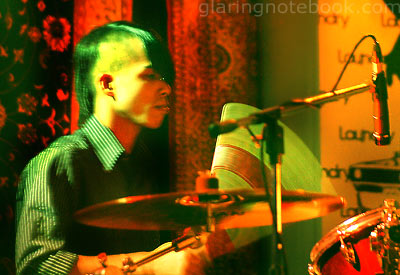
Alang on drums. Tip: Count with the drummer.

Tip: Hide the spotlights.
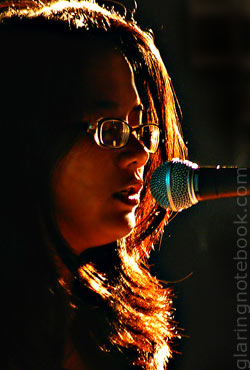
Work with the light.
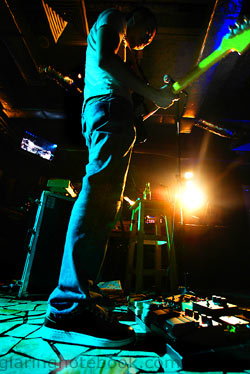
Ronnie and his pedals.
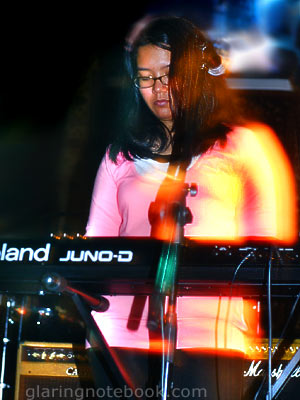
And then, inspired by their effect-ful play, I did this in one exposure.

Here’s a hint – Direct Manual Focus on the Sony A700.

The tall-looking emcee, May!
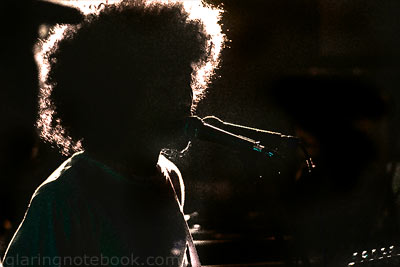
Next up: jazz-funk-rock Seven. That’s Bo with the ‘fro.
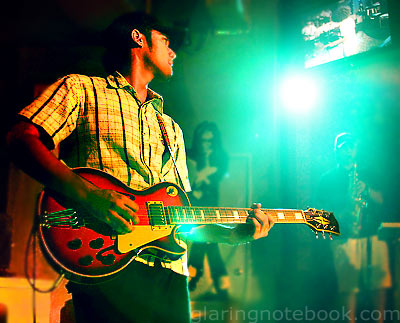
Hey man, when will the camera point at me?
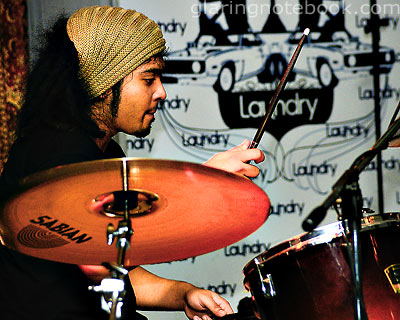
Or me? (Yes, drummers get statistically lower pictures of them due to poor lighting.)
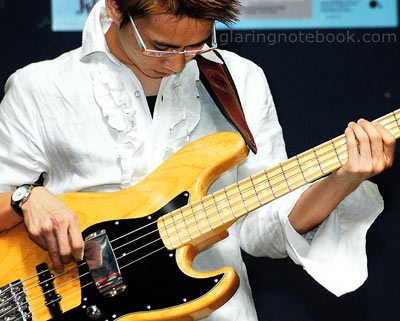
Gotta love the A700’s dynamic range, even with Dynamic Range Optimizer turned off.
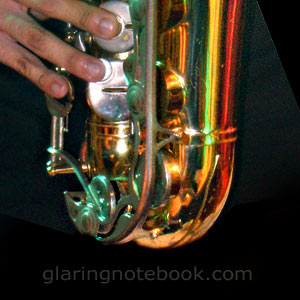
What I love most about this band is the saxophone, yo.
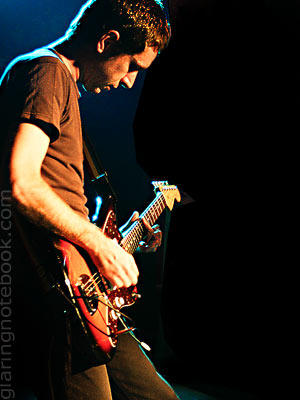
Deserters! Indie rock.
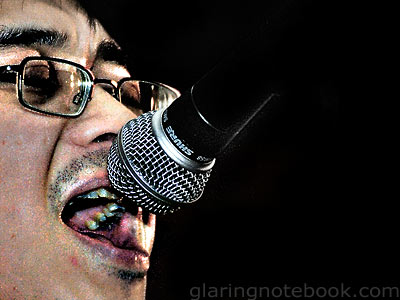
Zack Yusof.

Random attempt at a Dave Hill featuring Hyo Sun the blur Korean and Sammy (who looks sadder than a plate of bihun on a buffet table).

Lydia has a severe case of table-drumming. Join the Tugu Drum Circle, they meet at Tugu Negara every Sunday, 5:30pm. Listen for the rhythm!
The first gig I went to in 2008 a certain 3rd of January was Juke Joint Jupiter at Laundry Bar!
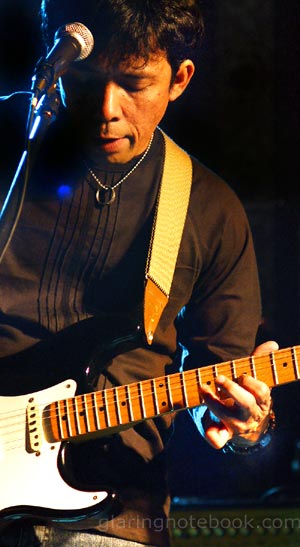
First was the Zubira Blues Band.

Featuring Eddy the organizer on vocals and sometimes blues harp.

…and random female fans.

Ito & Malay Blues. This is Ito, an otai (old-timer) with an amazing gravelly deep voice. That’s the same voice you’ll hear in the classic Blues Gang song, Apo Nak Dikato.
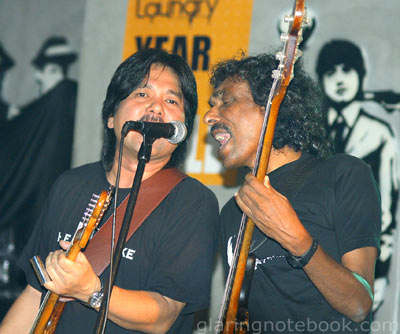
Pardon my cryptic sentence – anyway, Ito was from Blues Gang and so was Jim Madasamy on bass!

Edited 11th Feb 2008: This is Wan Ahmad from Sweet Charity. Thanks Eddy for the update!
I don’t recognize the others, though.
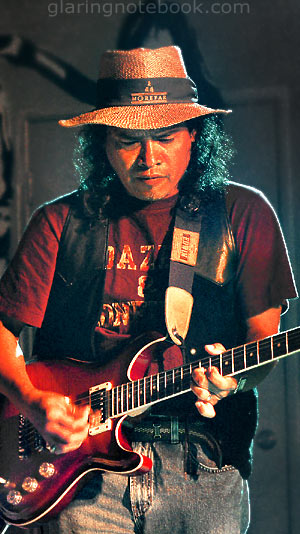
Aznan Aziz of the Boogie Brothers Band. Superb blues voice, taking from the greats. Hearing him cover blues greats reminded me of Jack White, somewhat, in terms of vocal capability.
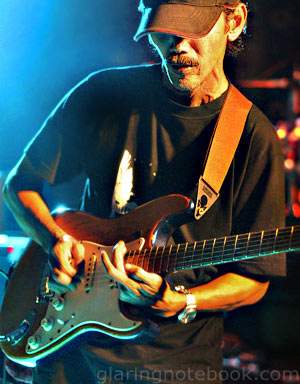
This shredder was interesting – his entire left arm would move about in a solid L shape when shredding. That must’ve been what gave him such feel!
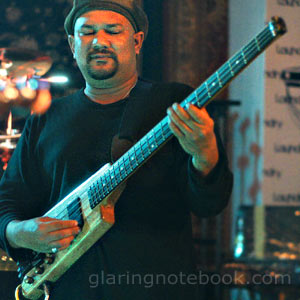
This is Sheik. (Thanks cyberdroxxx!) I’ve seen another blues bassist with a Steinberger. Is it in fashion?
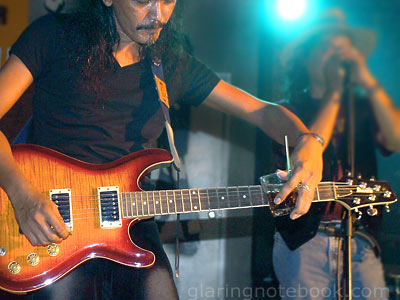
Edited 20th February 2008: Lord of Ella & The Boys doing some sweet glass slide guitar. Thanks Zubir A. for the update!
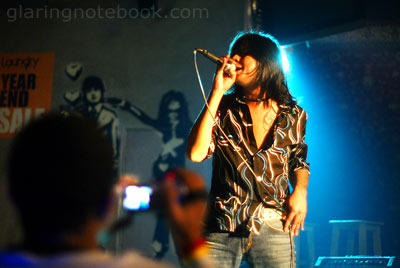
Then, there was Crush.

Super energetic hard-rockin’ singer.

So energetic, I gotta show you a GIF animation.
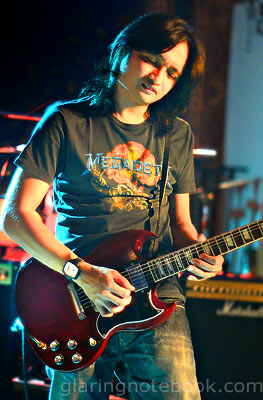
Shredder with a cool shirt.
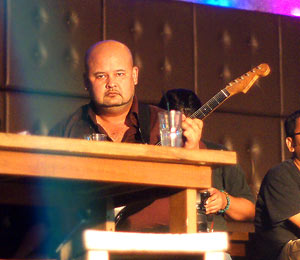
Spotted in the back was none other than comedian Harith Iskander!
When they announced that Malaysia’s favorite comedian was coming on stage, I shouted, “Hey wait a minute you’re not Afdlin Shauki!” Heh heh.
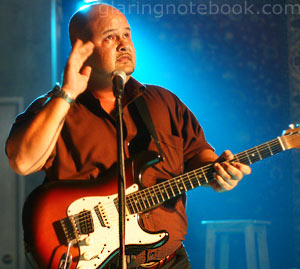
Do you all want to hear the blues?
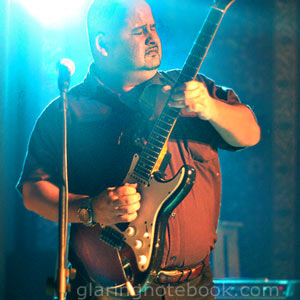
Boy, can he play the blues. There was something about his orgasmic expression that amused me, for some reason.

One more time, a GIF animation (yes I caught a flash!)
7th October 2007, a really backdated post featuring Izzy’s birthday party.
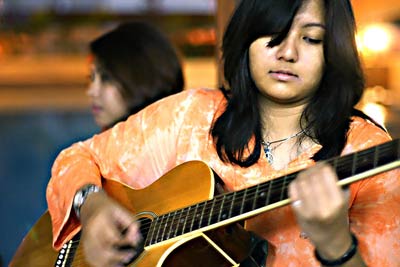
Here’s to the singer-songwriter who introduced me to Indomee (and a long time ago, she had the coolest dyed streak of hair which made me change my impression of dyed hair.)
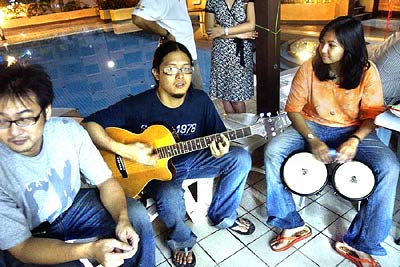
It is only inevitable when your friends are all musicians that there will be a jam all night long. Alex Ang played a kickass Megadeth – Holy Wars on acoustic guitar! It’s only because everybody wants a drummer that he becomes a drum slut for many bands.

Ashley Ang, his cute daughter!
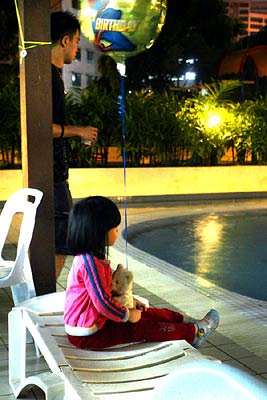
There must’ve been something in the water. There must’ve been.

Uh… biker chick.
Happy angpau collecting to all you unmarried people!
Sony Alpha 300 and Alpha 350 with Quick AF Live View!

The new Sony A300 and A350, based on the A200 chassis, has a robust tilting screen added to the back, and a unique method of autofocusing in Live View.
What is Quick AF Live View, and what’s the difference between AF modes in Live View?
With phase-detect AF, the mirror flips down to use the dSLR’s usual AF sensors located at the bottom of the camera. This means Live View is not available when it focuses, but it’s faster. The Olympus E-410, E-510, E-3, Pentax K20D, Canon 40D, 1D Mk III, 1Ds Mk III, Nikon D300 and D3 use this method.
With contrast-detect AF, the dSLR focuses using the image from the sensor. It is however, very slow and tends to miss unless it’s on a tripod and the object is stationary. I’ve tried it on two Nikon D300 dSLRs and it was horribly slow, tended to hunt and was unreliable (unless of course, you adhere to its name as “Tripod Mode”). I suspect that it should be 4x slower than digicams, which have 4x more crop factor and require 4x less focusing precision and thus focus 4x faster. The Nikon D300, D3, Panasonic L10 and Canon 450D use this method.

With Quick AF Live View on the Sony A300 and A350, it uses a tilting mirror. The mirror either points it to the optical viewfinder… or the CCD above it for Live View. This means switching is almost instantaneous!
(Picture stolen from dpreview.com)
They put a dedicated switch to choose between Live View and OVF on top of the camera. Brilliant move, as it makes it very obvious for beginners (ever tried to find out how to activate Live View on the Nikon D300 and Canon 40D? You have to go through menus.)
It uses the same phase-detect AF sensors at the bottom of the camera. This means you get the speed of phase-detect AF with the flexibility of Live View. Sony said they won’t make a Live View dSLR until they get it right, and boy has Sony got Live View right!
The first Live View dSLR, the Olympus E-330, had a clunkier implementation of this called Live View Mode A. Sony made it so brilliantly simple.
More details on Photoclub Alpha.
The price is interesting, too – it looks like:
A200 (10.2 megapixels, no Live View) – USD600 = RM1999
A300 (10.2 megapixels with Live View) – USD700 = about RM2399
A350 (14.2 megapixels with Live View) – USD800 = about RM2799
The A200 goes against the Canon 400D (no Live View) and Nikon D40x for the cheapest camera. I dare say it has more value for money – more buttons, better grip, Super SteadyShot, and better noise performance (I found its noise to be at Sony A700/Canon 40D/Nikon D300 levels.)
The A300 is the cheaper Live View model. This should pull people in.
“Eh, but if I add RM400 I can get 4 more megapixels!”
That’s where the A350 comes in, against the Canon 450D.
Finally, there’s another button on the right which I guess is the Smart Teleconverter function, for 1.4x or 2x zoom. Knowing Sony’s definition of Smart Teleconverter it means a crop.
New flash!

Edited 4th Feb 2008: The new Sony HVL-F42AM is interesting – a guide number of 42 meters at 105mm, which makes it weaker than the HVL-F56AM at 56 meters at 85mm. However, it has manual power and a tilt-swivel head just like the F56… and a very interesting automatic WB adjustment with color temperature information. I want one of those! Say goodbye to color temperature gels! Say goodbye to orange backgrounds and pink-colored people! (Picture stolen from CNet.com.)
Notice also, a completely revolutionary method of turning the flash into portrait orientation – it swivels the entire back with buttons and all! This means you can bounce in portrait mode easily while using the built-in bounce card.
I reckon they have a polarizer inside to change the flash temperature, or whatever they put in 16mm F2.8 fisheyes.
Edit 4th February 2008: This may not be the F42 flash, but a later model, as the F42 pictures have already been made public. We can still be hopeful, though.
New lenses!

Sony Carl Zeiss Vario-Sonnar 24-70mm F2.8 T* SSM – 1750 USD retail. Quite odd is the AF/MF switch around the focus hold button, a first on A-mount lenses. This might just be there to help the weaning mount jumper who doesn’t know of the superbly placed AF/MF switch at the right thumb, on the back of the Sony A700/A900. (Stolen from dpreview.com.)
Sony 70-300mm F4.5-5.6G SSM – 800USD retail, should be much cheaper once it reaches stores. I’d buy it if it was F4.5 at 200mm, as a replacement for the Minolta 70-210mm F4 beercan. Of course, I’d just be hopeful…
Then there’s the Sony Alpha 900!

Handsome-r after they rounded the A900’s prism shape. The portrait grip is not merged in by default, yay!
Stolen from AlphaMountWorld’s Sony PMA experience is this picture:

Hooray, the mode dial has the classic 123 memory slots. There’s a backlight button for the top LCD. Plus it doesn’t have the tiny top LCD other manufacturers seem to sell to old-timers who think top LCDs are the way to go. The transreflective screen of the A700 is superbly viewable in scorching daylight (I know) so the rear LCD is great for everything.

This shot, taken from dpreview.com, shows the rear of the Sony A900 – it more or less has finalized confidently the new layout.
Interestingly, the portrait grip on the A900 has a D-ring, but otherwise looks identical to the VG-C70AM used on the Sony A700.
And now, for other news:
Sigma releases new lenses, and adds mount support for Pentax, Sony and Four Thirds!
Sigma 70-200 F2.8 and 50-150 F2.8 APO EX DG II HSM for Pentax and Sony
I’m particularly excited about the Sigma 50-150mm F2.8 II HSM – it’s a beercan-sized F2.8. Relatively compact for its range and brightness! Unfortunately it’s only for APS-C sensors but heck! Amazingly, it also has HSM for A-mount and K-mount – a first for both. Then there’s also the excellent 70-200mm F2.8 making its return to the A-mount.
Sigma 18-125mm F3.8-5.6 DC OS HSM – what’s the point? There’s already a similiar 18-200mm with Optical Stabilizer (for Canon and Nikon). There’s also the 120-400mm F4.5-5.6 DG OS HSM and 150-500mm F5-6.3 DG OS HSM. I don’t know why anybody serious about tele would prefer these over the Bigma (50-500mm) though. There’s the 16 kg 200-500mm F2.8 EX DG for such extreme birders. It includes a matched 2x teleconverter! 1000mm F5.6 anyone?
Tamron is developing a 10-24mm F3.5-4.5 lens. Ultra-wide, and APS-C only. If it’s anything like the Tamron 11-18mm it can be used on full-frame at certain lengths (like 14mm onwards.)
Pentax K20D – They made their own 14.6 megapixel APS-C CMOS sensor! Live View with Phase Detect Auto Focus (meaning the mirror flips down to AF, so your Live View is disrupted), a 2.7″ LCD, PC Sync (strangely, this was not on the K10D). The button layout did not change much, and oddly, there is no ISO button despite it having one of the best layouts. Of course, their Auto ISO works great, and we have yet to see how their custom-built CMOS sensor will perform.
Added 4th February 2008: Some new lenses are announced – the 200mm F2.8 SDM, the 300mm F4 SDM, the 35mm F2.8 Macro Limited, an 18-55mm F3.5-5.6 II and a 55-300mm F4-5.8.
Canon EOS 450D – Finally, the entry level model of the EOS series gets a good working and gets some features sorely lacking compared to other brands in the same price range. Spot metering is finally in! (If you’ve ever shot anything with a lot of bright and dark areas you’d know how important this is.) A decent-sized viewfinder (the 400D and before had dark, tiny viewfinders.) Live View with Contrast Detect (you can see the AF happen in Live View, but it is astronomically slow). ISO in viewfinder! Better shaped grip! (On some days, I felt like the 300D/350D/400D was horribly small and shallow in grip.) Also, it gets a SD card slot instead, for some weird reason.
Possibly the best news about the 450D is that it gets the new Canon EF-S 18-55mm F3.5-5.6 IS, which is sharper than the shittily soft 18-55mm F3.5-5.6.
Olympus releases a most interesting firmware upgrade – you can now enter focal lengths for non-Four Thirds lenses on the E-3 and E-510. Focal length is needed for image stabilization, and fitting a M42 or Olympus Zuiko manual focus lens would not get stabilization unless the camera knew what the focal length was! This was seen on the Pentax K100D and K10D, still not seen on any Sony.
Nikon released the Nikon D60 – an upgrade to the 10-month old D40x. Why?!? The Nikon D80 was more wanting of an upgrade, being over the 18-month shelf-life of dSLRs. No, you still need to get a HSM or AF-S/AF-I lens to autofocus on this body, so it still isn’t compatible with the classics like the Nikkor 50mm F1.8 and other cheap lenses. It gets the new AF-S 18-55mm F3.5-5.6 DX VR lens, and a button dedicated to active D-lighting. It also steals Minolta’s eye sensor, which turns off the screen when you raise the camera to your eye.
Unfortunately, it doesn’t have any more buttons – if you wanna change WB and then ISO and then Drive mode, you’re gonna press a lot of buttons to go through menus. The Sony Alpha 200, Olympus E-510 and Canon EOS 450D are much, much better in this aspect.
Far more interesting is that Nikon released the Nikkor 24mm F3.5 tilt-shift/perspective correction lens. Loads of fun tilting a lens to increase/decrease depth of field and changing perspective. They also have a Nikkor AF-S 16-85mm F3.5-5.6G VR – the answer to the Olympus 12-60mm F2.8-4.0 SWD and the Sony Carl Zeiss 16-80mm F3.5-4.5. Of course, the lens isn’t as bright at 85mm, what a bummer. The CZ is actually most usable of them all, as the Olympus bodies use the Four-Thirds system which would be 1 stop weaker in noise performance.
* Not A Show At Laundry

Tarquin’s birthday was a good reason to come to Laundry. This is not Tarquin this is his queen.

All shots with the Minolta 50mm F1.4 at F1.4 ISO1600. God bless SuperSteadyShot!

…which, unfortunately, does not help with moving subjects in insanely dark places.

Dance dance.

Whoa, check out the lights maaan. Trippy.